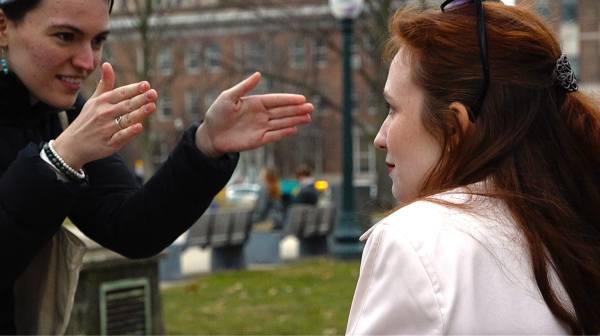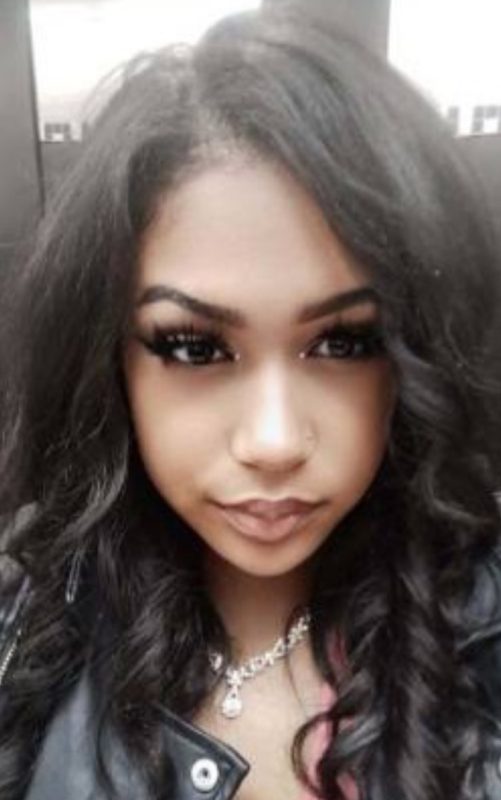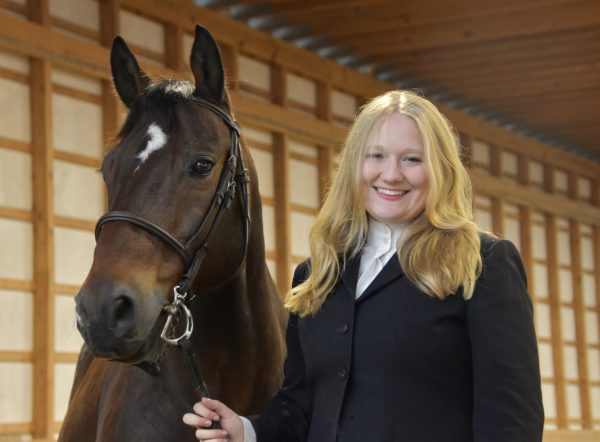Congratulations to the following Kalamazoo College students who achieved a grade point average of 3.5 or better for a full-time course load of at least three units, without failing or withdrawing from any course, during the Fall 2024 academic term. Students who elect to take a letter-graded course on a credit/no credit basis (CR/NC) are not eligible for Dean’s List consideration during that term. Nor are students who receive an F, NC or W grade for that particular term. Students with incomplete (I) or in-progress (IP) grades will be considered for the Dean’s List upon receipt of their final grades. Dean’s List recognition is posted on students’ transcripts. Kudos to the entire group for Fall 2024.

Fall 2024
A
Callie Abair
Yaz Abu-Zaid
Jade Acosta
Aliyah Adams
Tahmina Ahadi
Fuzail Ahmed
Isaac Ahn
Isabella Alimenti
Maya Alkema
Zoe Allen
Randa Alnaas
Adnan Alousi
Mahmoud Alsafadi
Emiliano Alvarado Rescala
Zahra Amini
Eleanor Andrews
Connor Anspach
Maya Arau
Emerson Arensman
Emily Auchter
James Azim
B
Gabrielle Baldori
Poppy Balkema
Carter Bandemer
Leila Bank
Grace Barber
Shyane Barnes-Taylor
Luke Barnum
Lena Barrett
Gabriella Barry
Joseph Basil
Ava Bechler
Emma Becker
Saniyah Bedell
Annabel Bee
Conner Bell
Josephine Belsky
Camila Benavides
Aubrey Benson
Thomas Bentley
Alexandrea Bernal
Eleanor Bernas
Henry Black
Derek Blackwell
Miles Borgsdorf
Daphne Bos
Mairin Boshoven
Sotirios Bougioukos
Eleni Bougioukou
Mabel Bowdle
Adelaide Bowen
Jaylen Bowles-Swain
Ella Boyea
Teige Bredin
John Brewer
Chloe Briggs
Ellie Britt
Lukas Broadsword
Cole Bronoel-Cuthrell
Eamon Bronson
Blair Brouwers
Chloe Brown
Ava Buccafurri
Jaden Buist
Kali Bunce
Sara Bush
C
Bailey Callaway
Eleanor Campion
Raymond Cargill
Samantha Carpentier
Luis Castro-Limon
Isabella Caza
Daniel Celedon
Haziel Cerroblanco
Bo Chambers
Josetta Checkett
Trustin Christopher
Parker Ciurla
Alisha Clark
Nathaniel Clark
Maya Clarren
Brendan Clinard
Mai Elise Code
Logan Coller
Toby Comensoli
Jordan Cook
Clay Cook
Josee Cooke
Nicklaus Coseo
Courtney Cotter
Cate Cotter
Cameron Couch
Holden Coulter
Sebastian Courtright
Connor Creech
Kamya Crenshaw
Mia Crites
Cameron Crosby
Isabella Cross
Lilian Crowder Smith
Skye Crowell
Chase Cummins
D
Emily Dalecki
Erik Danielson
Ethan Daugherty
Jasmine Davis
Jacob Davis
Griffin Davis
Maya Davis
Avery Davis
Asha Dawson
Zachary Dean
Tara Dean-Hall
Noel DeFeyter
Lille Dekker
Enrique Delzer
Maansi Deswal
Laura DeVilbiss
Jack Dewey
Alexander Di Dio
Olivia DiGiulio
Michaela Dillbeck
Reed Dixon
Shane Dong
Alexia Dowell
Charles Doyle
Jack Duggins
E
Alden Ehrhardt
Abigail Eilertson
Evelyn Ellerbrock
Elise Elliot
Owen Ellis
Francis Ernzen
Lily Evans
Ryan Everham
Dilynn Everitt
Chad Ewing
Bradley Eziuka
F
Claire Farhi
Madalyn Farrey
Max Feliks
Margaret Ferris
Blake Filkins
Bridget Finco
Sara Finks
Mabel Fitzpatrick
Alex Fleming
Sofia Fleming
Jordan Flink
Mathias Florian
Robyn Foley
Ross Fooy
David Fooy
Jessica Forbis
Drew Fortino
Emma Frederiksen
Caden Frost
G
Dillon Gacki
Lucy Gallagher
Maria Garcia
Valeria Garcia
Ingrid Gardner
Isaac Garza
Roberta Gatti
William Geiger
Mallory Gentry
Arlo Getachew
Maira Ghaffar
Logan Gillis
Nathan Gleason
Makala Goddard
Brizza Gonzalez
Charles Gordon
Charles Graves
Cecilia Gray
Natalie Greene
Kaitlyn Grice
Westin Grinwis
Cassandra Grotelueschen
Cole Grupenhoff
Sarah Guerrero Gorostieta
Oliver Gutierrez
H
Aiden Habboub
Sydney Hagaman
Isabelle Hahn
Carter Haley
Avery Hall
Colin Halloran
Blu Haney
Alison Hankins
McKinley Hanninen
Colten Hansen
Luke Hanson
Kaylee Hanson
Doyle Harrison
Pauline Hawkes
Beatrice Hawkins
Willow Hayner
Thelma Hazen
Jacob Hazlewood
Zachary Heikka
Elizabeth Henderson
Litzy Hernandez
Jay Hernandez
Felix Hernandez Santiago
Gerardo Herrera-Sanchez
Ashlen Hill
Alyssa Hinkley
Jacob Hoffman
Garrick Hohm
Timothy Hollern
Jaelyn Horn
Evanne Horrigan
Molly Horton
Tyler Houle
Gavin Houtkooper
Jakob Hubert
Kennedy Hynde
I
Zarifa Ibrahimzada
Jalen Iereneo
Carson Ihrke
Carolyn Ingram
Britt Inman
Weslee Innes
Harper Isaacs
Daniel Isacksen
Macy Ivins
J
Teddy Jacobson
Rex Jasper
Ryleigh Jaworski
Johe Newton Johnson
Halley Johnson
Jaden Johnson
Caroline Johnson
Zane Jones
Ayako Jurgle
K
Kiana Kanegawa
Thomas Kartes
Isabelle Kastel
Seth Keana
Jackson Keefer
Alyson Kemery
Mphumelelo Khaba
Hibah Khan
Joshua Kim
Dong Eun Kim
Ava King
Samuel King
Kendyl Kirshman
Mart Klenke
Toni Koshmider
Katya Koublitsky
Jaden Kowalski
Julia Kozal
Daryn Krause
Jason Krawczyk
Jack Kreckman
Shay Kruse
Annabelle Krygier
L
Andrew La Penna
Kathleen La Prad
Nicholas LaFramboise
Daikan Lale
Rylee Lambert
Edward Langton
Braeden Lavis
Elijah Layne
Son Le Dinh Truong
Delaney Lee
Seonha Lee
Maya Lee
Joseph Leonard
Ellie Lepley
Sage Lewis
Aidan Liedeke
Alexander Ligman
Alex Lloyd
Ava Loncharte
Katelyn Long
Beatriz Lopez
Alondra Lopez
Maya Lopez
Grace Lounds
Madeline Lovins
Mairead Lynch
Isabella Lyskawa
M
Ellie MacE
Lauren MacKersie
Kyler Maiorana
Natalie Maki
Larson Makie
Andrew Mallon
Ariadne Markou
Natalie Martinez
Kate Martinez
Cassidy Martini-Zeller
Isabelle Mason
Alexandria Mason
Matthew Matuza
Benjamin Maurice
Zachary Maurice
Cedric May
Allison Mayer
Jay McDaniel
Mollie McDonald
Fallon McFarland
Grace McGlynn
Jacey Merkle
Rachel Meston
Estelle Metz
Gabriel Meyers
Bernice Mike
Brittany Miller
Marin Miroslavich
Ameera Mirza
Elana Mitchell
Aliah Mohmand
Jacques Monchamp
Raven Montagna
Alondra Danahe Montoya Martinez
Elizabeth Morgan
Meena Moritz
Maren Mosher
Mary Ellen Muenzenmaier
Elizabeth Muenzenmaier
Alex Mungai
Andrew Munger
Ella Myers
Sydney Myszenski
N
Nailia Narynbek Kyzy
Sabrina Nelson
Chloe Nelund
Mackenzie Newhall
Robert Newland
Emma Newlove
Kevin Nguyen
Yen Giang Nguyen
Theodore Niemann
Maeve Nolan
Malin Nordmoe
O
Mary Oduor
Nora Oleary
Gabriel Olivier
Nicholas Olmeda
Emma Olson
Tyler Omness
Reece Omodio
Kevin Oneill
Muna Onwochei
B Osborne
Andrew Oss
Aryka Ostroski
Nathan Overmier
P
Maren Palmer
Eron Palmer
Renzo Palomino Caceres
Brennan Pannucci
Rachael Pashturro
Juniper Pasternak
Morgan Paye
Zachary Payment
Alberto Paz-Rodriguez
Logan Pearson
Marcus Pedde
Phillip Pedicone
Audrey Pegouske
Isabella Pellegrom
Alex Pepin
Noah Peters
Maya Peters
Katarina Peters
Tobias Peters
Maggie Petersen
Paige Peterson
Anna Phyo
Timothy Pinches
William Plesscher
Evan Pollens-Voigt
Mario Pomorski
Madelyn Portenga
Tadeusz Potocki
Madison Potts
Grayson Pratt
Juliana Pullen
Noah Pyle
Q
Alex Quesada
Brody Quinn
R
Elizabeth Rachiele
Tieran Rafferty
Akaash Raghunath
Nicole Rapp
Hunter Rayens
Sara Reathaford
Laura Reinaux Silva Oliveira
Julia Reisor
Micahaia Reynolds
Jaycee Rider
Sheldon Riley
Narelle Robles
Jackie Rodriguez
Ash Rodriguez
Nevaeh Rodriguez-Vergel
Amelia Rooks
Luke Rop
Eli Routt
Miriam Ruiz Kahle
Nathaniel Rulich
Wyatt Ruppenthal
Amir Rustamov
McKenna Ryan-Elbert
S
Amelie Sack
Abigail Samson
Ryan Sanborn
Sofia Santos
Leslie Santos
Isabella Santos-Pye
Simon Sawyer
Maxwell Saxton
Cecilia Schihl
Leo Schinker
Olivia Schleede
Vivian Schmidt
Annika Schnell
Eden Schnurstein
Arden Schultz
Audrey Schulz
Ava Schwachter
Aurora Scott
Alison Settles
Brendon Shaffer
Katherene Shank
Halen Sherwood
Veda Shukla
Clara Siefke
Mo Silcott
Zachary Simmons
Julia Sitz
Kiersten Sjogren
Colby Skinner
Dawson Skupin
Kendall Slamka
Jamie Smith
Maja Smith
Ping Smith
Owen Smith
Anoushka Soares
Jonah Spates
Sophia Sprick
Florian Stackow
Adam Stapleton
Katelyn Steinbrecher
Eleanor Stevenson
Joseph Stevenson
Meredith Steward
Pavel Stojanovski
Elena Stolberg
Calvin Strader
Zachary Strauss
Katherine Suarez
Maeve Sullivan
Hannah Summerfield
Jocelyn Suranyi
Grace Sweet
Brady Swift
T
Ella Talaski
Charlotte Tatara
Jovanay Taylor
William Thomas
Levi Thomas
Sandra Tienda-Lopez
Elizabeth Tiesworth
Emily Tiihonen
Alexander Tolman
Lily Toohey
Phoebe Tozer
Vincent Tran
Samuel Tremaglio
Sutton Tutas
U
Christopher Ulrich
Lilibeth Uribe
V
Tony Vaisanen
Anthony Valade
Eli Van Drie
David Van Hooser
Gavin Van Kampen
Lucy Vandemark
Lauren Vanderstelt
Cameron VanGalder
Mitchel VanGalder
Ella VarnHagen
Morgan Vasquez
Gianna Vicario
Savannah Vincent
W
Audrey Walker
Ivy Walker
Annslee Ware
Ryan Warezak
Nina Warrow
Haley Watson
Jordan Wesaw
Kiersten West
Charles Wester
Maggie Westra
Jack Wheeler
Benjamin Whitsett
Jay Wholihan
Alicia Wilgoren
Elisabeth Wilks
Ruth Wilson
Sierra Winter
Ryan Witt
Darius Wright
Emma Wrobleski
Y
Devin Yankee
Z
Sofia Zeller
Nora Zemlick
Katalina Zhao
Maggie Zhu
Brock Zimmerman
Kenzi Zimmerman-Frost
Lee Zwart









































